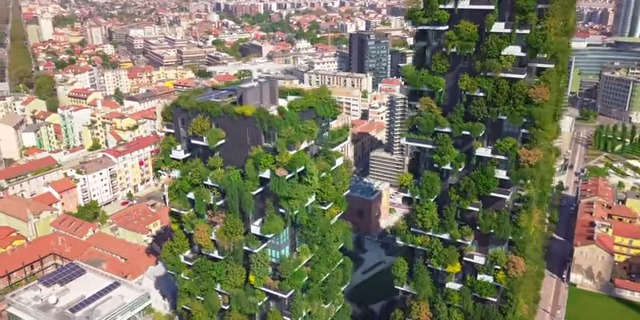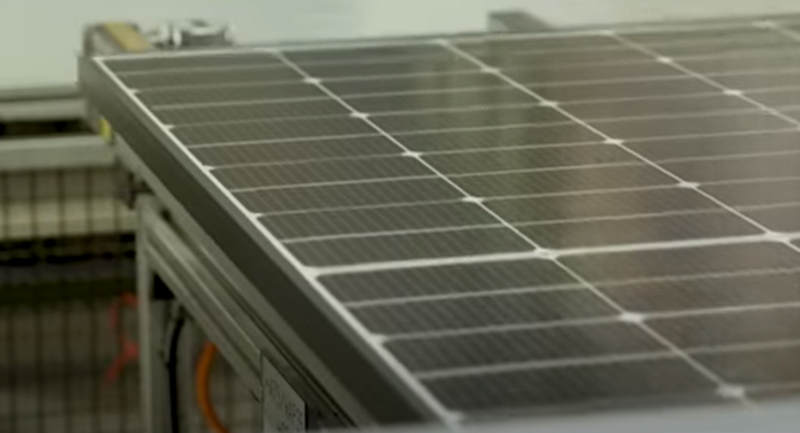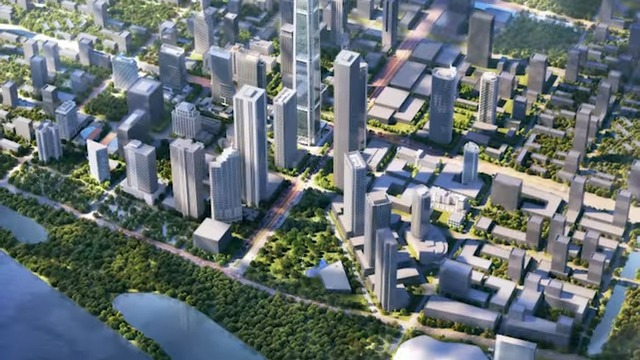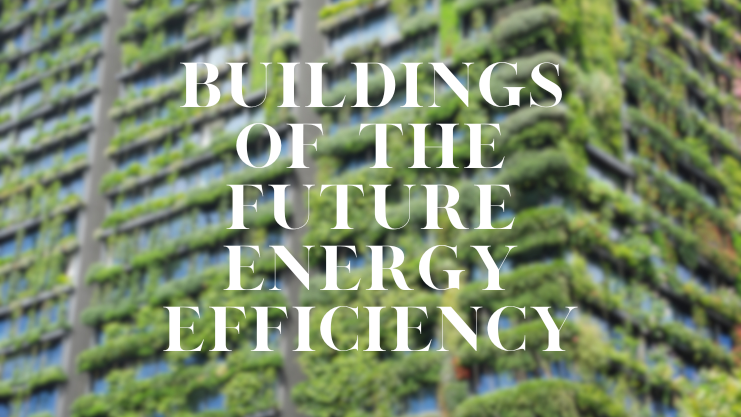As we teeter on the edge of an environmental precipice, the role of our homes, offices, and structures in shaping a sustainable future has never been more vital.
These structures, where we live, work, and play, are major players in the world’s energy scene, influencing our carbon footprint and the health of our planet. Yet, they also present an opportunity – a chance to redefine our relationship with the environment.
Imagine a home that not only shelters and comforts but also works diligently to minimize its energy use. Picture an office that is more than just a place of work, but a testament to the power of innovation and technology in promoting sustainability.
In this journey, we’ll step into a world where structures do more than just stand tall. We’ll explore how thoughtful design, cutting-edge materials, and smart technologies are shaping a new generation of structures.
We’ll visit places that have successfully embraced this new approach and discuss the economic implications and hurdles in this transition. So, buckle up and get ready for a deep dive into a world where our structures are not just spectators, but active players in our quest for a sustainable future.
The Current State of Building Energy Consumption

Buildings, both residential and commercial, account for a significant portion of global energy consumption. According to the International Energy Agency, buildings and building construction sectors combined are responsible for 36% of global energy consumption and nearly 40% of total direct and indirect CO2 emissions.
This high level of energy consumption is due to various factors, including inefficient design and construction, outdated heating and cooling systems, and a lack of awareness or concern about conservation. The impact of this consumption is profound, contributing to climate change, air pollution, and other environmental issues.
However, the tide is turning. There is growing recognition of the need to reduce consumption in buildings, and significant strides are being made in this direction. From the adoption of designs and technologies to the implementation of stringent building codes and standards, efforts are underway to transform the way we build and operate our buildings.
The Concept of Energy-Efficient Buildings
They are designed and constructed to reduce energy consumption, improve comfort, and minimize environmental impact. These buildings use less energy to perform the same function as a conventional building, resulting in lower energy costs and reduced greenhouse gas emissions.
The key features of include high-quality insulation, windows, efficient heating and cooling systems, and the use of appliances and lighting. These buildings are also often designed to take advantage of natural light and ventilation, further reducing the need for artificial lighting and air conditioning.
They are not just about the use of specific technologies or materials; they’re about a holistic approach to design and construction that considers the building’s entire lifecycle. This includes considering the building’s location, orientation, and layout, as well as the local climate and the building’s intended use.
The Role of Architecture and Design in Energy Efficiency
Architecture and design play a crucial role in the efficiency of buildings. Through smart design choices, architects can significantly reduce a building’s energy consumption while improving comfort and aesthetics. This includes decisions about the building’s layout, orientation, and materials, as well as the integration of technologies.
For example, by orienting a building to take advantage of natural light and ventilation, architects can reduce the need for artificial lighting and air conditioning. Similarly, by choosing materials with high thermal mass, they can help regulate indoor temperatures, reducing the need for heating and cooling.
In addition to these passive design strategies, architects are also incorporating active strategies, such as the integration of renewable energy systems. For example, solar panels can be integrated into the building’s design to generate electricity, while solar water heaters can provide hot water.
Innovative Materials
In the quest for buildings, scientists and engineers are developing new and innovative materials. These materials not only reduce energy consumption but also improve comfort and durability.
One example is phase-change materials (PCMs), which absorb or release heat as they change state, helping to regulate indoor temperatures. Another example is aerogel insulation, which offers superior insulating properties with less thickness than traditional insulation materials.
In addition to these high-tech materials, there is also a resurgence of interest in traditional, natural materials, such as straw bales and rammed earth. These materials have excellent thermal properties and are renewable, making them an attractive option for energy-efficient buildings.
Smart Technologies and Automation

Smart technologies and automation are playing an increasingly important role in energy-efficient buildings. These technologies allow for more precise control over building systems, resulting in greater energy efficiency and comfort.
For example, smart thermostats can learn a building’s occupancy patterns and adjust heating and cooling systems accordingly, reducing energy waste. Similarly, smart lighting systems can adjust light levels based on the amount of natural light available, reducing the need for artificial lighting.
In addition to these individual technologies, there is also a growing trend toward integrated building management systems. These systems bring together various building systems, allowing them to work together for greater efficiency.
Renewable Energy Integration

The integration of renewable energy sources is another key aspect of energy-efficient buildings. By generating their own electricity from renewable sources, buildings can reduce their reliance on fossil fuels and decrease their carbon footprint.
Solar power is the most common form of renewable energy used in buildings, with solar panels often integrated into the building’s design. Wind power is also used, particularly in high-rise buildings where wind speeds are higher.
In addition to generating electricity, renewable energy can also be used for heating and cooling. For example, solar water heaters can provide hot water, while ground-source heat pumps can provide heating and cooling.
The Role of Policy and Regulation
Government policies and regulations play a crucial role in promoting the construction of energy-efficient buildings. These can include building codes and standards that require certain levels of efficiency, as well as incentives and subsidies for construction and renovation.
For example, the European Union’s Energy Performance of Buildings Directive requires all new ones to be nearly zero-energy buildings by 2020. Similarly, in the United States, the Department of Energy’s Building Technologies Office works to improve the energy efficiency of the nation’s buildings through research, development, and market stimulation.
These policies and regulations not only help to reduce consumption and greenhouse gas emissions, but they also stimulate innovation in the building sector. By setting high standards for efficiency, they encourage architects, engineers, and builders to develop new and innovative solutions.
Case Studies

- Globally, numerous energy-efficient buildings serve as excellent examples of this approach, showcasing innovative design, materials, and technologies.
- The Bullitt Center in Seattle, USA, often referred to as the world’s greenest commercial building, generates all its electricity through a rooftop solar array, uses rainwater for all its water needs, and incorporates various other energy-saving features.
- The Pearl River Tower in Guangzhou, China, designed to be one of the world’s most energy-efficient skyscrapers, maximizes natural light and ventilation and includes energy-saving technologies such as solar panels, wind turbines, and a radiant cooling system.
The Economic Benefits
- Energy-efficient buildings offer significant environmental benefits and are also economically viable. They reduce energy consumption, leading to substantial cost savings over their lifecycle.
- While the initial construction cost of energy-efficient buildings may be higher, these costs are often offset by lower energy bills.
- Energy-efficient buildings typically have higher property values and lower vacancy rates, making them a sound investment.
- The construction of energy-efficient buildings can stimulate economic activity and create jobs in sectors such as construction, manufacturing, and renewable energy.
Challenges and Solutions in Implementing Energy-Efficient Buildings

While the benefits of buildings are clear, there are also challenges in implementing these buildings. These challenges include higher upfront costs, a lack of awareness and understanding, and regulatory barriers.
However, there are solutions to these challenges. For example, financial incentives, such as subsidies and tax breaks, can help to offset the higher upfront costs of energy-efficient buildings. Education and training can increase awareness and understanding of energy efficiency. And policy reforms can remove regulatory barriers and create a more favorable environment for energy-efficient buildings.
Final Words
As we look to the future, it’s clear that buildings will play a crucial role in creating a greener world. These buildings not only reduce energy consumption and greenhouse gas emissions, but they also offer a host of other benefits, including cost savings, improved comfort, and economic opportunities.
The path to a greener world is not without challenges, but with innovation, commitment, and collaboration, we can create buildings that are not only efficient but also sustainable, resilient, and beautiful. As we face the challenges of climate change and resource scarcity.
Related Posts:
- Integrating Energy Efficiency and Renewable Energy…
- Structural Sustainability: Steel Buildings Leading…
- Sea Level Rise: A Watery Warning for Our Future
- Hydrogen vs Electric Cars: Which One Offers a Better Future?
- How Do Animals Get Energy? Nature's Powerhouses
- How Energy-Efficient Are LED Grow Lights? The…








